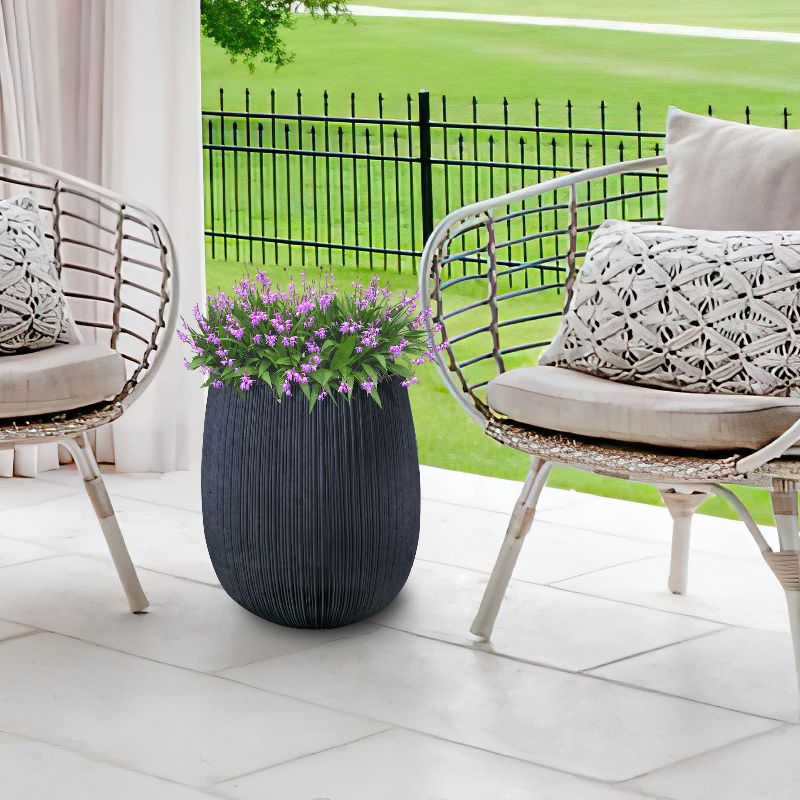Choosing the right planter material is a crucial decision for any gardening project, whether you're cultivating a rooftop garden, refreshing your indoor plants, or beautifying your backyard. Each planter material offers unique benefits and challenges. Selecting the best one depends on various factors such as the plant type, environmental conditions, aesthetic preferences, and maintenance needs. This guide will help you understand the popular planter materials and how to choose the right one for your specific situation.
Factors to Consider When Choosing Planter Material
It’s essential to identify your gardening needs. Here are the primary considerations:
Climate: Some materials retain heat, while others are more resistant to frost and extreme temperatures.
Weight: If you're gardening on balconies or rooftops, heavy planters might not be practical.
Water Retention: Certain materials dry out quickly, while others retain moisture better, affecting your watering schedule.
Durability: Planters should withstand environmental elements, especially if used outdoors.
Aesthetic Appeal: The material should complement the style of your home or garden.
Budget: Some materials are more affordable, while others offer better long-term value.
Popular Planter Materials and Their Pros and Cons
1. Terracotta and Clay Planters
Terracotta and clay pots are among the most popular choices for gardeners, especially for indoor plants and herbs.
Natural aesthetic: Their warm, earthy tones blend well with greenery.
Breathable material: Terracotta allows air circulation, preventing root rot.
Best for: Succulents, cacti, and indoor plants that prefer dry soil conditions.
2. Plastic Planters
Plastic planters are lightweight and budget-friendly, making them a practical choice for both indoor and outdoor use.
Lightweight: Easy to move around, even with soil and plants.
Affordable: Available in a wide range of colors, shapes, and sizes.
Water-retentive: Great for plants that prefer moist soil.
Best for: Annuals, vegetables, or herbs that need frequent watering.
3. Ceramic Planters
Ceramic planters are often chosen for decorative purposes because of their glossy finish and variety of designs.
Aesthetic appeal: Available in vibrant colors and patterns.
Heavy: Prevents plants from tipping over in the wind.
Best for: Indoor decorative plants and tropical houseplants.
4. Wooden Planters
Wooden planters add a rustic touch and can blend seamlessly into natural landscapes. They are often made from cedar, redwood, or treated pine.
Natural look: Ideal for rustic gardens.
Moderate insulation: Helps regulate soil temperature.
Customizable: Can be painted or stained.
Best for: Vegetables, herbs, and larger shrubs.
5. Metal Planters
Metal planters, such as those made of stainless steel, aluminum, or galvanized steel, offer a sleek and modern look.
Durable: Resistant to cracking and chipping.
Stylish: Ideal for contemporary spaces.
Best for: Succulents or decorative plants in shaded areas.
6. Concrete and Stone Planters
Concrete and stone planters are solid and durable, making them suitable for large plants and outdoor spaces.
Durable: Can withstand extreme weather conditions.
Heavy: Perfect for stabilizing large plants or trees.
Aesthetic appeal: Provides a natural, minimalist look.
Best for: Trees, shrubs, and large ornamental plants.
7. Fabric Planters (Grow Bags)
Fabric planters, also known as grow bags, are becoming popular for urban gardening.
Breathable: Improves air circulation to the roots, preventing root-bound plants.
Lightweight and portable: Easy to move and store when not in use.
Affordable: Generally inexpensive and eco-friendly.
Best for: Herbs, vegetables, and container-friendly fruits like strawberries.
Tips for Making the Right Choice
Match the Material to Your Plant’s Needs: For moisture-loving plants, choose plastic or ceramic. Succulents and cacti prefer terracotta since it allows for better drainage.
Consider the Climate: In regions with cold winters, avoid terracotta or ceramic pots outdoors. Instead, opt for metal or concrete that can withstand freezing temperatures.
Evaluate Weight and Mobility: If you need to move planters around, choose lightweight options like plastic or fabric grow bags. For windy locations, heavy concrete or stone planters offer stability.
Think About Longevity: For long-term outdoor use, invest in durable materials like concrete, treated wood, or metal. If you prefer a short-term or seasonal setup, plastic or fabric can work well.
Plan for Aesthetics: Select materials that complement your garden or home design. For example, ceramic planters are perfect for modern interiors, while wooden ones enhance rustic spaces.
Conclusion
Selecting the right planter material requires a balance between aesthetics, practicality, and your plant’s needs. Whether you choose lightweight plastic, stylish ceramic, or durable concrete, each material offers unique benefits. Consider the climate, water requirements, and mobility needs to ensure your plants thrive.
With the right choice, your planters will not only enhance your garden’s beauty but also provide a healthy environment for your plants to grow. By taking the time to select the right material, you’ll set yourself up for a more successful and enjoyable gardening experience.





